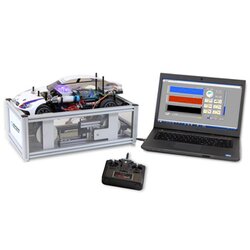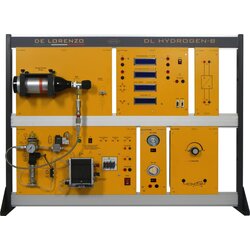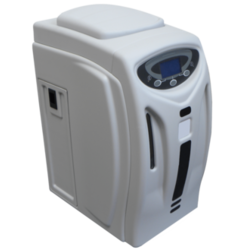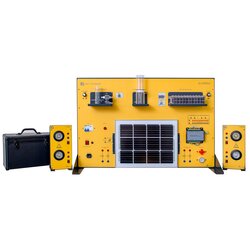Electrolyzer (60 Nl/h) (EDILAB-ELEC2)
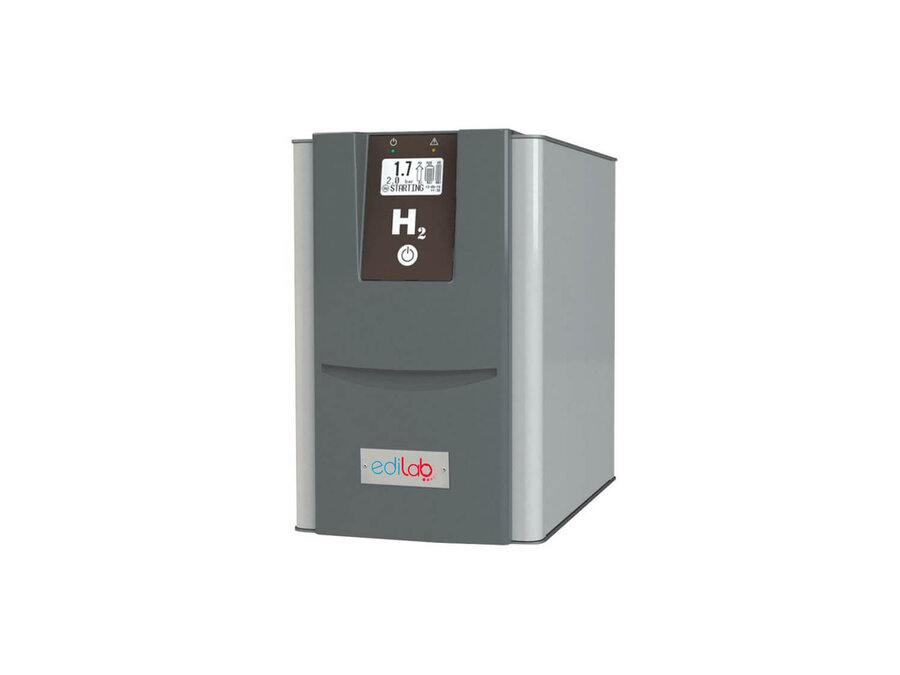
PL-925727
Worries about the global climatic change and environmental degradation which results from the use of fossil fuels as primary energy source, together with the concerns about the energy provision, have made some analysts propose hydrogen as the universal energy carrier for the future. Using hydrogen as energy vector allows the development of a wide number of technologies. Specifically, fuel cells supplied with hydrogen can reach high efficiencies and have a great variety of applications, both portable and stationary.
Fortunately, hydrogen can be obtained from several raw materials following diverse process technologies (such as chemical, electrochemical, biological photolythical and thermochemical technologies), and using several primary energy sources. Each technology is at a different development stage and offers unique opportunities, benefits and challenges. Hydrogen generation techniques can be classified as follows:
- Chemical conversion processes: reforming, gasification and pyrolysis.
- Thermolytic processes: direct thermolysis and thermochemical cycles.
- Electrolytic processes: electrolysis.
- Biological processes: fermentation, anaerobic digestion.
- Photonic processes: photoelectrolysis, photobiolysis and photocatalysis.
In order to obtain hydrogen, the Electrolyzer with a hydrogen production of 60 Nl/h, “EDILAB-ELEC2”, follows an electrolytic process.
The Electrolyzer (60 Nl/h), “EDILAB-ELEC2”, designed by EDIBON, can separate hydrogen and oxygen from water by applying electricity. The “EDILAB-ELEC2”, consists of an electrolyzer to generate hydrogen which uses a high performance and efficiency system based on water electrolysis. Hydrogen to be used safely is obtained from it. The electrolysis cell is a PEM type membrane. It only needs deionized water and generates 60 l/h of 99.99 % purity hydrogen.
The generated hydrogen gas is accumulated in the hydrogen/water separator and the desiccant housing. The pressure is controlled by a pressure transducer. The output pressure is indicated on the display. The hydrogen is dried by passing it through a drying tube. The hydrogen then passes throught the shutoff valve and exits the generator through the outlet port at the rear.
Bench-top unit.
PEM electrolyzer with a hydrogen generation of 60 l/h:
- Water input: De-ionized water (must meet ASTM type II and conductivity of less than 0.1 uS).
- Maximum outlet pressure: 10 – 16 bar.
- Operating temperature: 15 – 40 °C.
- Purity: 99,9999 % (Grade 6.0). For information on how to achieve higher purity, please contact us (*).
Direct connection for the Computer Controlled PEM Fuel Cell Advanced Unit, “EC6C”, or the PEM Fuel Cell Advanced Unit, “EC6B”. Cables and accessories, for normal operation.
Manuals: This unit is supplied with the following manuals: Required services, Assembly and Installation, Starting-up, Safety, Maintenance & Practices manual.
What is this?
These percentage scores are an average of 0 user reviews. To get more into detail, see each review and comments as per below
If you have used this product, support the community by submitting your review
